Class 8 Exam > Class 8 Notes > Arts (Kriti) Class 8 - New NCERT > Chapter Notes: Pan Indian Dance Forms
Pan Indian Dance Forms Chapter Notes | Arts (Kriti) Class 8 - New NCERT PDF Download
Introduction
Dance is an integral part of India’s cultural heritage, with various classical forms each representing the diverse traditions of different regions. This chapter explores eight major classical dance forms of India, each with its unique history, style, and cultural significance. These forms are Bharatanatyam, Kathak, Kathakali, Kuchipudi, Manipuri, Mohiniyattam, Odissi, and Sattriya, along with a brief mention of regional folk dances.
Eight Major Dance Forms of India
1. Bharatanatyam
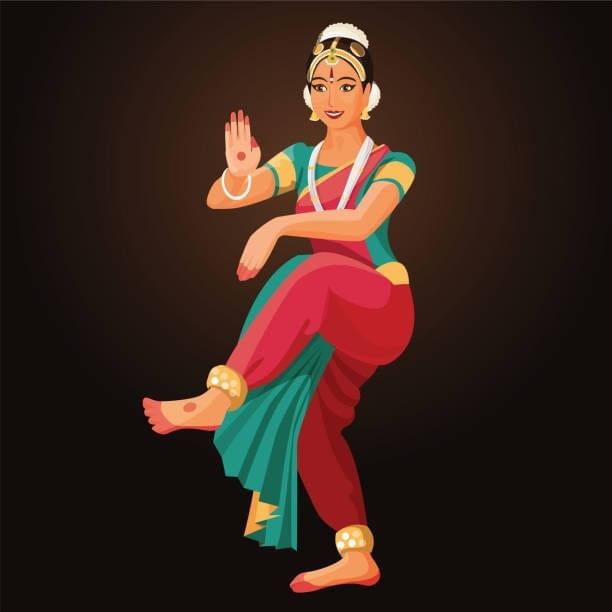
- Origin: Tamil Nadu, South India.
- Features: Geometric and graceful movements, strong footwork, expressive hand gestures and facial expressions.
- Purpose: Dancers tell stories using emotions, music, and rhythm.
- Traditions (Bāṇis): Thanjavur, Pandanallur, Vazhuvoor, Mysuru, and many others.
- Posture: Special half-sitting position called aramandi or ayatamandala, shaped like a diamond.
- Costume: Colourful silk sarees with pleats in front that open beautifully while dancing; adorned with temple jewellery
2. Kathak
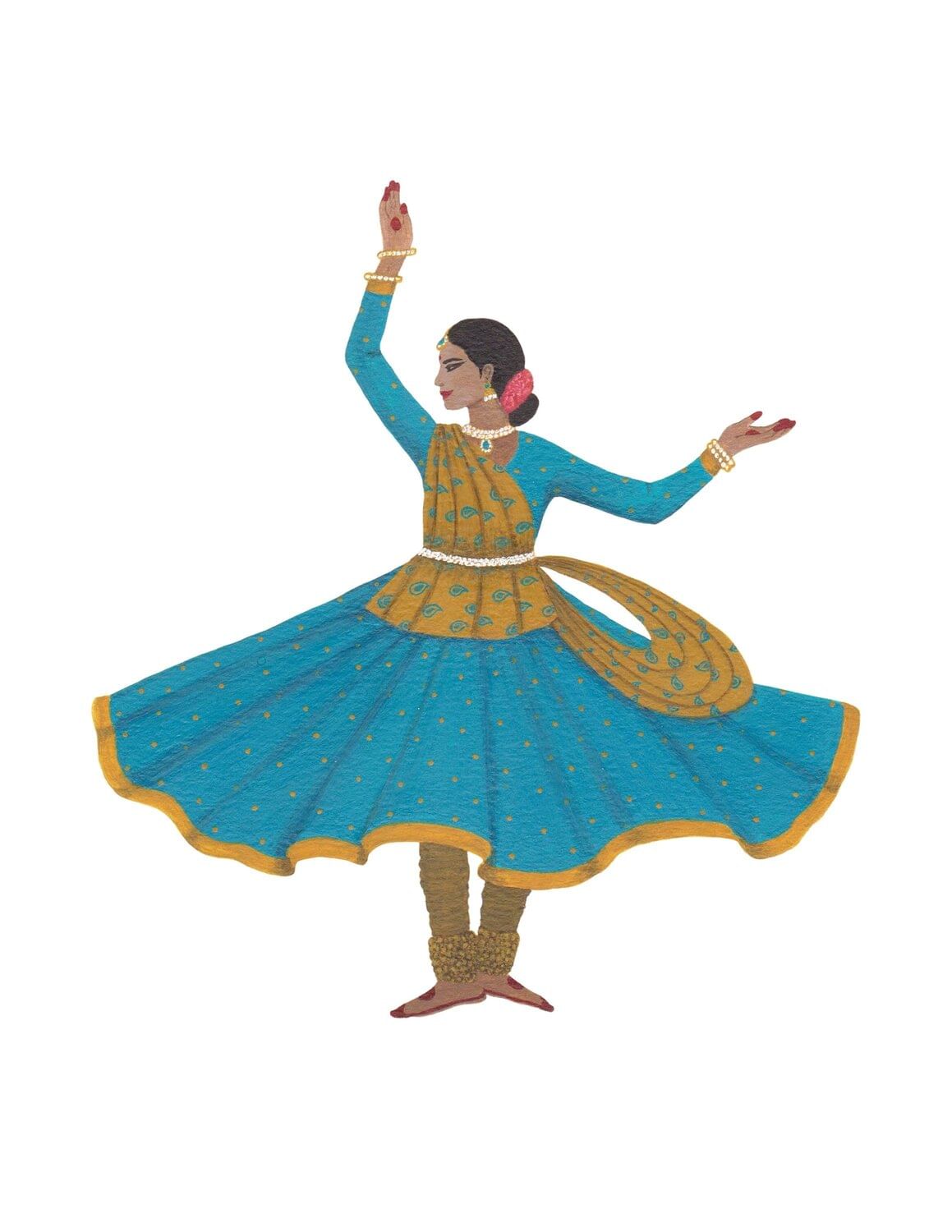
- Origin: Uttar Pradesh and Rajasthan, Northern India
- Movement Characteristics: Storytelling through expressive gestures, intricate footwork, spins, rhythmic foot stamping, and facial expressions.
- Famous Styles: Lucknow, Jaipur, Banaras, Raigarh
- Key Stance: Sama sthana (feet together or in a slight V-shape)
- Costume: Long flowing dresses such as anarkalis or lehengas with dupattas
3. Kathakali
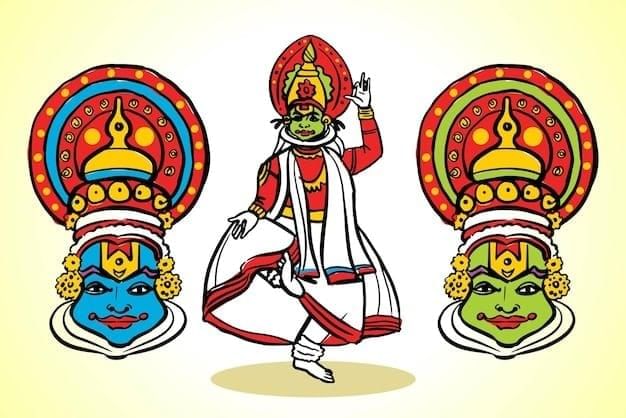
- Origin: Kerala, Southern India
- Movement Characteristics: A dance-drama form, known for acting out stories using stylised facial expressions, hand gestures, and body movements.
- Key Stance: Atimandala (deep, grounded posture with bent knees)
- Costume: Bright costumes, large crowns, heavy makeup, and face paint matching the character's role (green for heroes, red for villains).
4. Kuchipudi
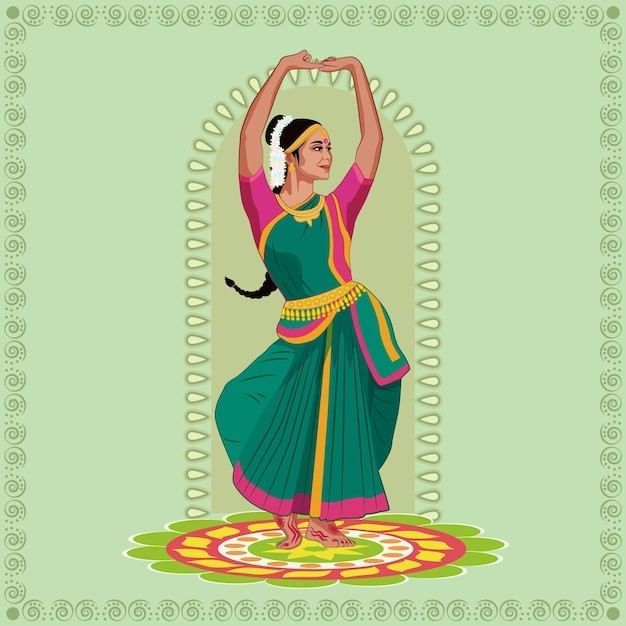
- Origin: Andhra Pradesh and Telangana
- Movement Characteristics: Quick footedness, hip movements, leaps, and sculpturesque poses. It integrates acting and dance.
- Key Stance: Aramandi (similar to Bharatanatyam but less deep).
- Costume: Silk fabrics stitched for easy movement with a special drape (gochi kattu) and traditional temple jewellery.
5. Mohiniyattam
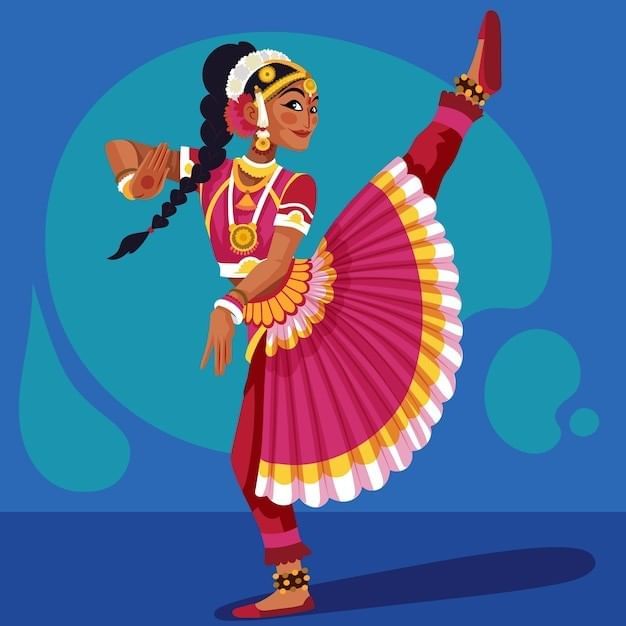
- Origin: Kerala
- Movement Characteristics: Soft, flowing movements, with a focus on expression and devotion.
- Key Stance: Various levels between low and medium positions like aramandala and atimandala.
- Costume: White or cream sarees with golden borders (kasavu) and traditional jewellery.
6. Manipuri
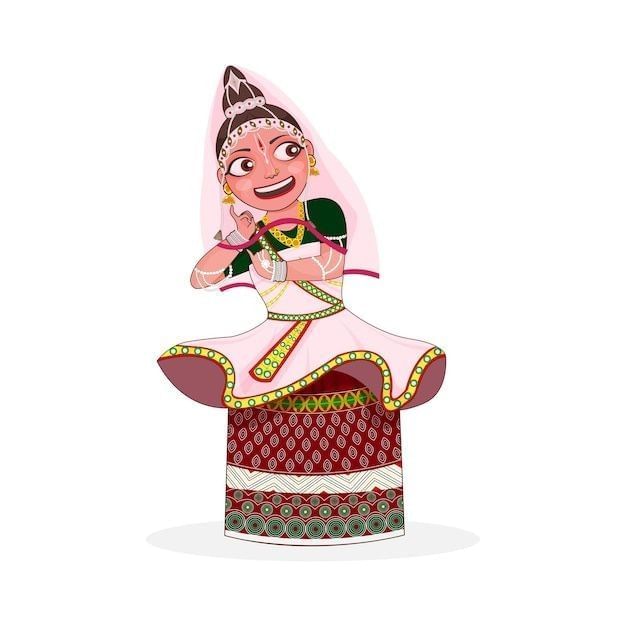
- Origin: Manipur, North-East India
- Movement Characteristics: Soft, gentle, and flowing movements with a peaceful and calm expression. Includes raas leela (stories of Krishna) and Lai Haraoba.
- Special Dance: Pung Cholom (drum dance).
- Costume: Poloi dress for women and dhotis and turbans for men.
7. Odissi
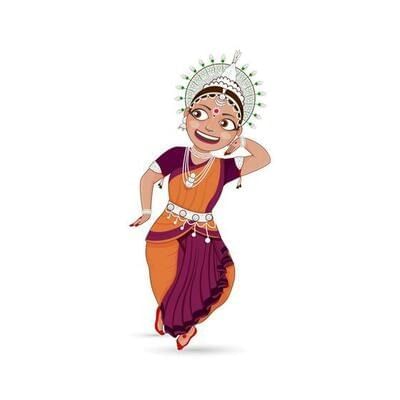
- Origin: Odisha, Eastern India
- Movement Characteristics: Smooth, flowing movements with slow turns and graceful steps. Features the tribhanga pose (bend at the head, torso, and hip).
- Key Stance: Chauka (half-sitting, square-shaped posture).
- Costume: Traditional fabrics like pattasari (silk) with fan-shaped pleats, silver filigree jewellery, and a flower-like headpiece (tahiya).
8. Sattriya
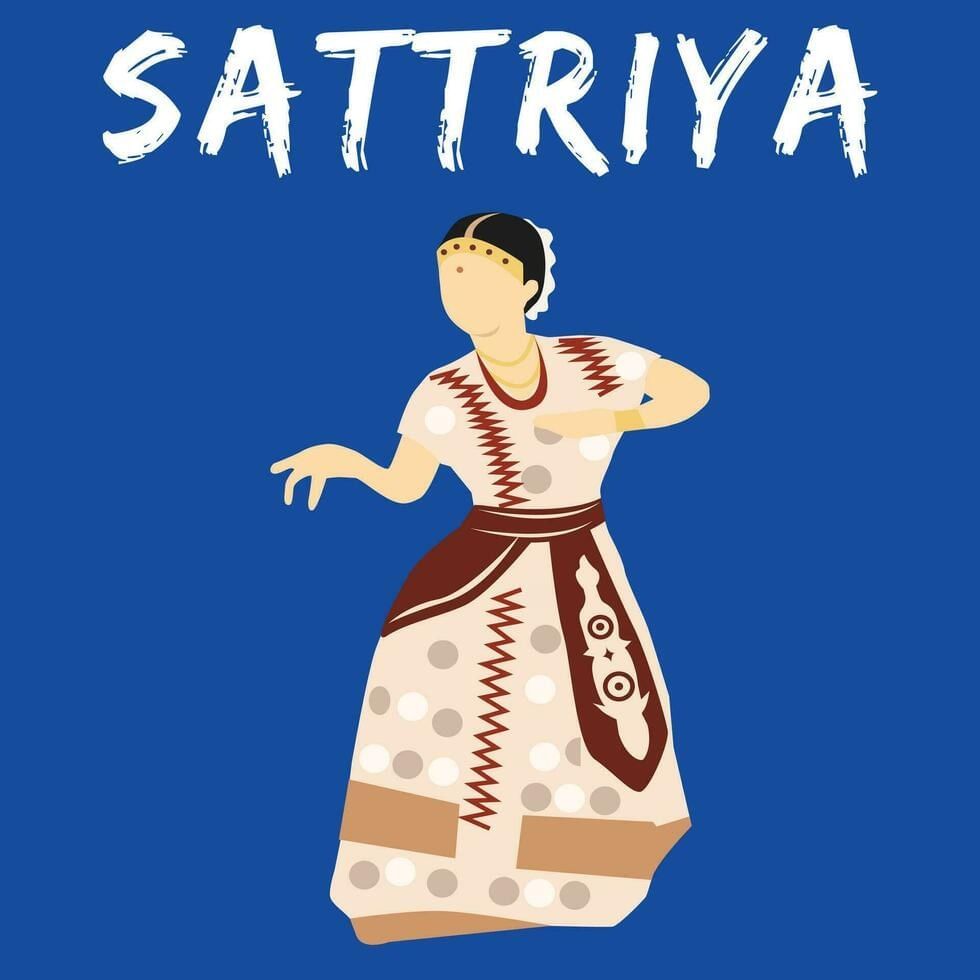
- Origin: Assam
- Movement Characteristics: Strong and gentle movements, telling stories through realistic actions. Originally performed by male monks, later open to women.
- Key Stance: Two main postures: purusha (male) and prakriti (female).
- Costume: Assamese silk called pat, traditional designs, dhoti or skirt.
Eminent Personalities of Classical Dances
- Bharatanatyam: C. V. Chandrashekhar.
- Kathak: Sitara Devi.
- Kathakali: Kalamandalam Gopi.
- Kuchipudi: Vempati Chinna Satyam.
- Manipuri: Guru Bipin Singh.
- Odissi: Kelucharan Mohapatra.
- Mohiniyattam: Kalamandalam Leelamma.
- Sattriya: Rasheswar Saikia
Other Dance Traditions
Folk Dance from Ao Tribe, Nagaland
- Celebrations: Moatsu Mong (post field clearing and sowing), Tsungrem Mong (harvest thanksgiving).
- Features: Colourful costumes, songs, dances; distinction in clothing between commoners and warriors (mangkotepsu).
- Other dances: Sumi war dance, mungyanta (harvest dance by Lotha women), Sangtam War Dance, Hornbill Dance, Chang Lo, Butterfly Dance.
- Personality: Sangyusang Pongen – Sangeet Natak Akademi Awardee.
Traditional Dances of Chhattisgarh
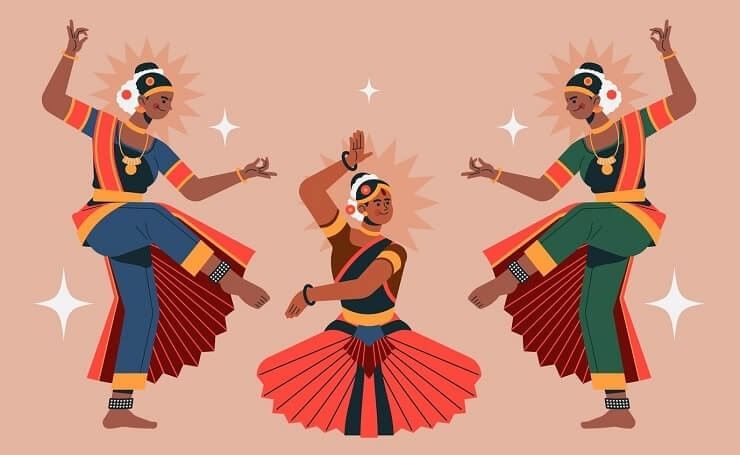
- Occasions: Festivals, harvests, rituals.
- Panthi dance: Satnami community; formations to beats of mandar drum and jhanjh.
- Gaud Maria dance: Bison-Horn Maria community, Bastar plateau; performed during births, marriages.
- Karma dance: Honours Karma Devi during harvest.
- Suwa danda/parrot dance: Performed by women during harvest and Diwali.
- Gedi dance: Gond people; performed on bamboo stilts.
- Personality: Mamta Chandrakar – Sangeet Natak Akademi Awardee, Padma Shri recipient.
The document Pan Indian Dance Forms Chapter Notes | Arts (Kriti) Class 8 - New NCERT is a part of the Class 8 Course Arts (Kriti) Class 8 - New NCERT.
All you need of Class 8 at this link: Class 8
|
76 docs|19 tests
|
FAQs on Pan Indian Dance Forms Chapter Notes - Arts (Kriti) Class 8 - New NCERT
| 1. What are the eight major dance forms of India? |  |
Ans. The eight major dance forms of India include Bharatanatyam, Kathak, Odissi, Kathakali, Manipuri, Mohiniyattam, Sattriya, and Folk Dance. Each of these forms has its unique style, history, and cultural significance, reflecting the diverse traditions of various regions in India.
| 2. How do the classical dance forms of India differ from folk dances? |  |
Ans. Classical dance forms of India are highly structured and follow specific rules and techniques, often based on ancient scriptures and traditions. They are performed in a formal setting and have established schools or gharanas. In contrast, folk dances are more spontaneous and informal, typically performed during festivals and celebrations, and are influenced by local customs and traditions.
| 3. What is the significance of dance in Indian culture? |  |
Ans. Dance in Indian culture serves multiple purposes, including spiritual expression, storytelling, and social bonding. It is often used in religious rituals, festivals, and celebrations, highlighting the rich cultural heritage of different regions. Dance also plays a role in preserving history and traditions, as many forms have been passed down through generations.
| 4. Can you explain the role of music in Indian dance forms? |  |
Ans. Music plays a crucial role in Indian dance forms, as it provides the rhythm and emotional backdrop for the performance. Each dance form has its specific types of music, which may include classical instruments, vocal music, and percussion. The combination of dance and music enhances the storytelling aspect, allowing dancers to convey emotions and narratives more effectively.
| 5. How can one learn the major dance forms of India? |  |
Ans. Learning the major dance forms of India typically involves enrolling in dance schools or institutions that specialize in these styles. It's essential to find a qualified teacher who can provide proper training and guidance. Many dance forms also offer workshops and community classes, making it accessible for beginners and enthusiasts to learn and appreciate the art of Indian dance.
Related Searches
















